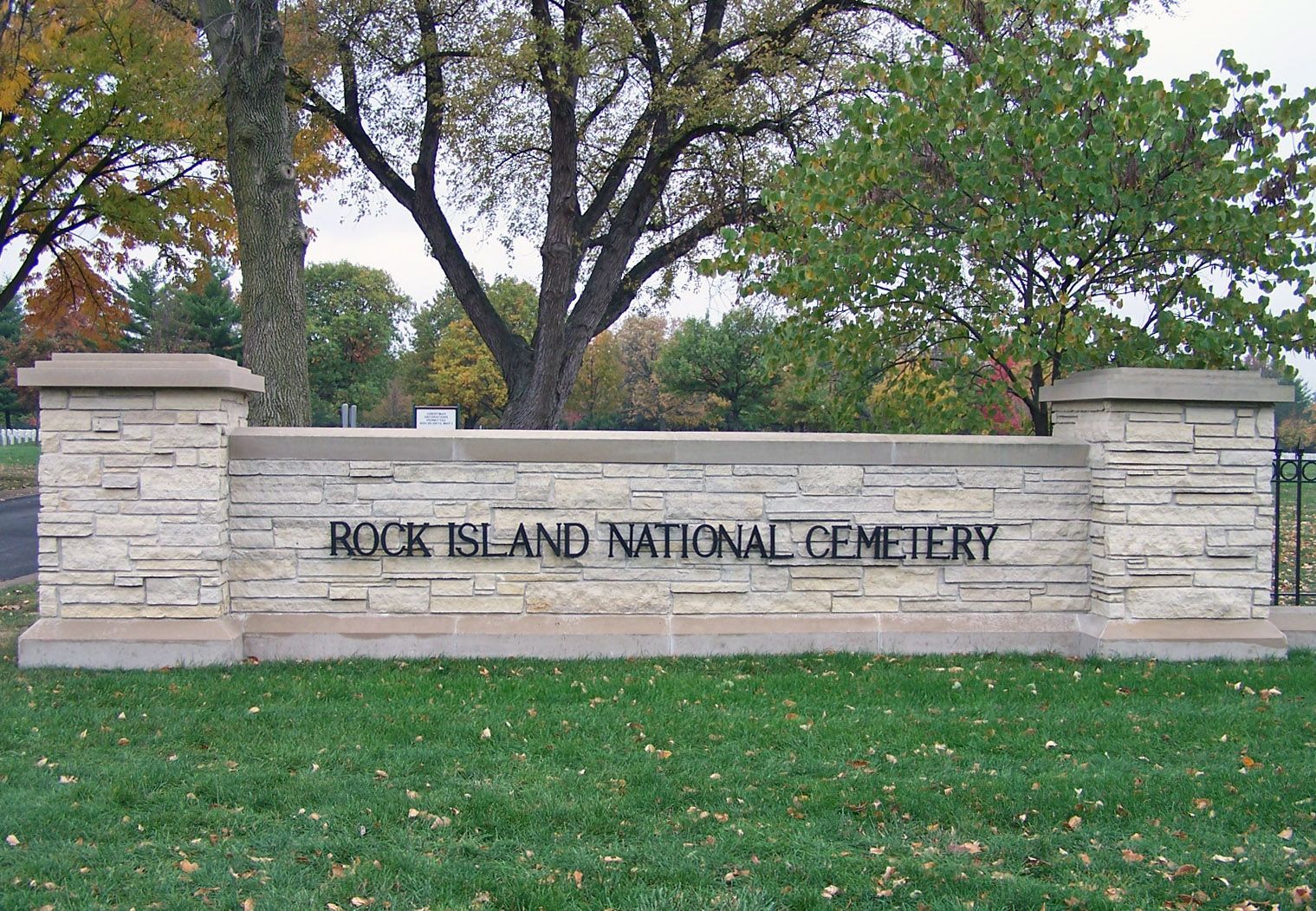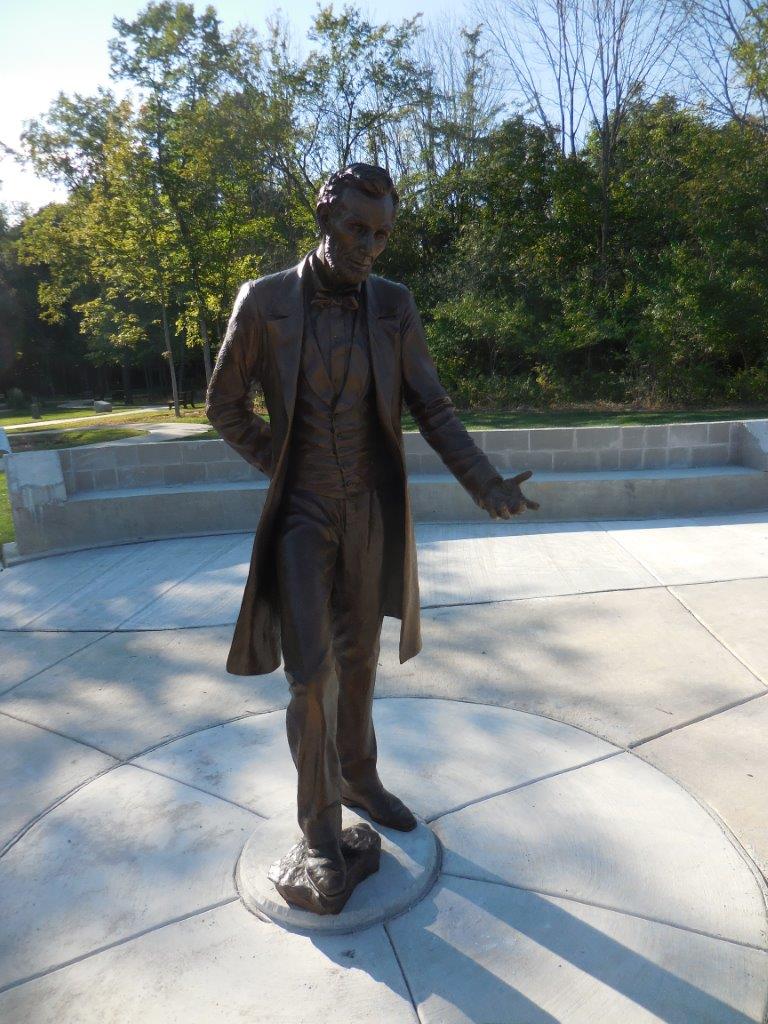Military Cemetery Illinois - This article contains a list of common references. But there are not enough inline references. Please help improve this article by providing more accurate citations (March 2018) (Learn how to delete this template text and how to remove it).
39°50′01″N 89°33′25″W / 39.8334963°N 89.5568939°W / 39.8334963; 39.8334963; -89.5568939
Military Cemetery Illinois

Camp Butler National Cemetery is a United States National Cemetery. Located a few miles northeast of Springfield. It's a few miles southwest of Riverton, a small town near Springfield. Sangammon County Illinois Named after the Treasurer of the State of Illinois at the time of its founding, William Butler, it is administered by the United States Department of Veterans Affairs. It covers approximately 53 acres (21 hectares) and is home to 19,825 cemeteries as of d 2005. Camp Butler National Cemetery was listed on the National Register of Historic Places in 1997.
White House: Trump's Motorcade To Military Cemetery Would Have Disrupted Paris Roadways
During the civil war Camp Butler is the second largest military training camp in Illinois. after Camp Douglas in Chicago After President Lincoln summoned the troops in April 1861, the US Department of Defense and Brigadier General William T. Sherman to Springfield. Illinois to meet with Governor Richard Yates to select a suitable location for the training center.
Because Governor Yates was unfamiliar with the area around Springfield, the state capital of Illinois. He enlisted the help of Treasurer William Butler, who along with Illinois Secretary of State Ozeus M. Hatch. which rode a wagon with William T. Sherman to survey the land about 5 and a half miles northeast of Springfield. The site near Riverton, Illinois (known as "Jimtown" for Jamestown) was chosen and named in honor of William Butler. The Union Training Center was officially established on August 2, 1861. During the war, more than 200,000 Union soldiers would pass through Camp Butler.
Along with soldiers who fought on both sides of the Civil War. Soldiers killed in the Spanish-American War World War I and World War II Korean War and Vietnam War They were also buried at Camp Butler. German and Korean prisoners of war were also buried there. which was moved from a cemetery near Indianapolis, Indiana
The camp was originally designed to train and "raise" Illinois soldiers for the Civil War. It was quickly pressed into service to house approximately 2,000 Confederate soldiers who were taken prisoner during the surrender at Fort Donelson, Tennessee, on February 16, 1862.
Alton's Wreaths Across America Honors And Remembers Veterans
Plans were made for the burial of Confederate prisoners of war who had died in the camp. Approximately 700 prisoners died in 1862 when smallpox and other diseases took hold. outbreak in the camp The situation was made worse by the poor living conditions in which the prisoners lived. And they were buried in a cemetery in their district of Kopano. Today, a total of 866 Allied prisoner graves can be found in the National Cemetery. Confederate cemeteries are easily identifiable by their pointed headstones, created under superstition as a way to prevent demons from living in their graves. They are buried alongside 776 Union and Conscript graves, for a total of 1,642 Civil War graves. Located about 50 miles southwest of Chicago, this national cemetery occupies 982 acres and It is one of the largest cemeteries in the US state (after Calverton National Cemetery in Calverton, New York), created in 1999 by the US Department of Veterans Affairs. The cemetery is built on 24,000 acres of land that used to be the Joliet Army Ammunition Factory, which produced ammunition during World War II, the Korean War, and the Vietnam War. Midwin Nation (MNTP) in the 1990s
In 1999, architect Harry Weese Associates and structural architect Joe Karr and Associates worked together on a plan for the cemetery, with Karr at the head of the project. They carefully examined the topography and natural features of the site. by leading Hoffwoods which is the oldest remaining forest in the state of Illinois was used in the design The ride and entertainment corridor system is designed to connect different buildings and tombs. To accommodate mature oaks, seven columbaria clusters face the west aisle. and five funeral homes in the northwestern area to hold multiple funerals at the same time. The existing road was Diagonal Road, once the main pioneer route from Chicago to Springfield. preserved and built a small burial ground - the pioneers were also saved.
Estimated to be a four-phase project over the past several decades. Graveyards will provide 400,000 burial space upon completion. When the first team completes the first phase of the project SmithGroupJJR was hired to lead a multi-phase II team whose work included implementing a complete storm water management system and restoring more than 30 hectares of native land to connect to the nearby MNTP. Raham Lincoln becomes first cemetery to host federally approved monument to honor LGBTQ veterans

Shalom cemetery illinois, forest home cemetery illinois, illinois military, forest park cemetery illinois, mount carmel cemetery illinois, graceland cemetery chicago illinois, oak hill cemetery illinois, resurrection cemetery justice illinois, illinois cemetery records, abraham lincoln military cemetery illinois, abraham lincoln cemetery illinois, lincoln memorial cemetery illinois
0 Comments